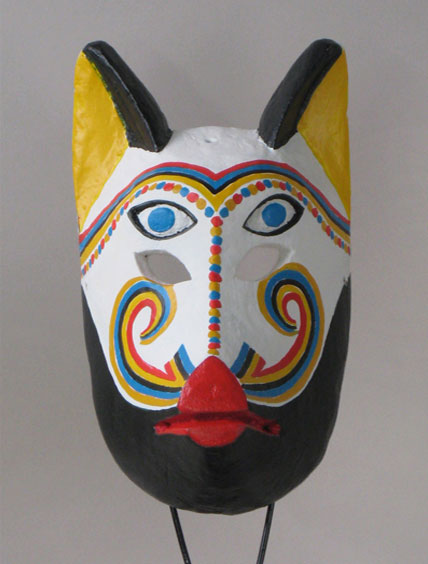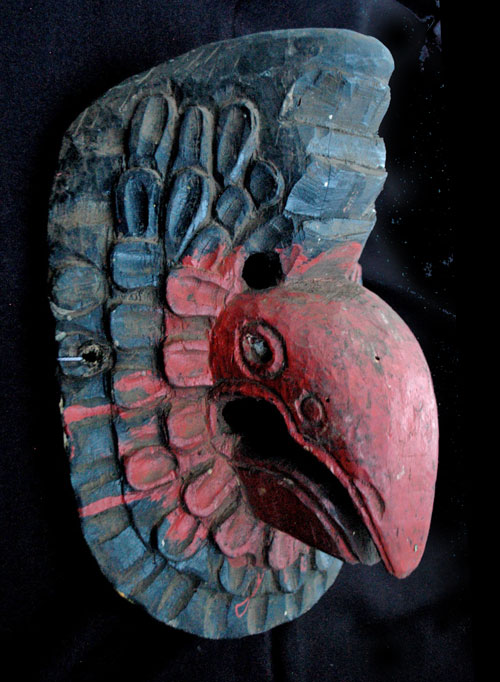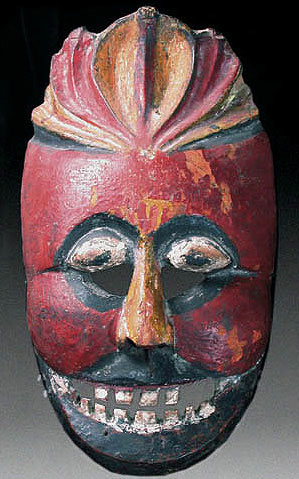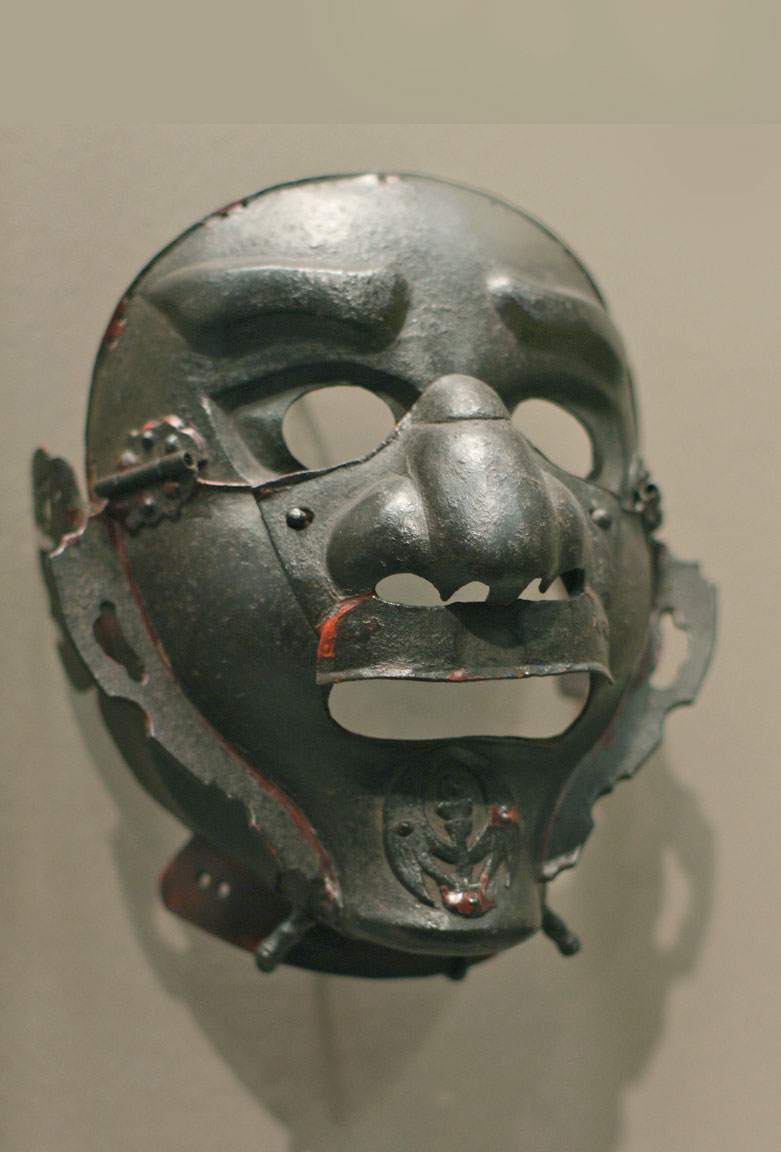Q: Here are several photos from Suchitlan, including an old photograph of the Morenos who are all wearing the masks made by Don Herminio. Pablo, 898
A: The first photo is a coyote by the master maskmaker, Herminio Candelario of Suchitlan, Colima, in western Mexico. His father and his sons were/and are well known makers, but he was, in my opinion, the Picasso of Mexican masks. A+
The second is an old photo of the big celebrations in Suchitlan’s Fiesta of the Animals. This revelry is in conjunction with the Blessing of the Animals. Participants wear masks representing all the animals of the land. Animals of all types, from family pets to farm animals, are brought to the church to be blessed.
One of dances is in honor of the Colored People (Morenos). This dance depicts pairs of animals, who danced in front of the Roman solders guarding the tomb of Jesus to distract them from the resurrection. The masks are made in pairs of both male and female animals, representing Noah’s animals on the Ark.






3 Comments
Christophe
I visited Herminio Candelario in Suchitlan back in the late 97 or 98. Its a great story I often tell. We had to go to Colima for work and I had cajoled my colleagues into driving to Suchitlan once we were done to look for the mask maker whose beautiful owl mask graced the cover of a book I owned (Mask Arts of Mexico by Ruth Lechuga and Chloe Sayer, Thames & Hudson 1994). Suchitlan is a small coffee-growing town on the skirts of the Nevado de Colima volcano – definitely not on the the beaten track. When we arrived we drove around town asking for the house of Herminio Candelario and were eventually directed to a small house that was not much more than a shack. A wary man came to the door when we knocked but once we explained our purpose he relaxed, identified himself as the mask maker and invited us in. The was only one room maybe 10 ft squared with a dirt floor. four or five thin mattresses were piled in a corner. He led us out through another door at the back and showed us his work table and equipment. Several masks were scattered around in different states of completion. He explained that he was teaching his sons his craft so they could eventually take over the mask making duties for the village. I gave him a copy of the Lechuga book which he had not seen. He was shocked. We bought every finished mask he had. Most were like the one above but two are special favorites of mine as they were clearly much older. I showed them to my friend in Mexico City who had a gigantic mask collection and he agreed they were special. Over the years I have given away many of the masks we bought that day but the the two older ones still have pride of place on my wall. I could post photos of the masks if there is interest. As we left and got back in to the car we heard Herminio in his house shriek with delight – he had just made more money in an hour than he probably made in several months!!
Sof
What Materials are Used in this mask?
Bob Ibold
Nothing but wood and paint, which are the most common mask making materials in Mexico. Papier mache and paint would come second.